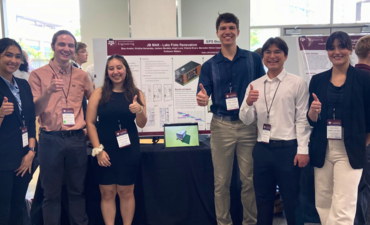
Prevention through Design (PtD) isn't just about protecting the workers on the new construction project. It also encompasses safety and health protection of the people who interact and use the building or facility once it is built and occupied.
A technical report published in 2018 details a "life cycle" approach to PtD in construction to include all "stakeholders" including those who eventually occupy the building. When the ANSI/ASSP A10 Committee for Construction and Demolition Standards voted to write an ANSI voluntary consensus standard to address PtD in construction, I was selected to head up the project as Subgroup Chair.
Bringing all stakeholders to the table
Early on, it was clear that the focus of the project could go many directions. The group had numerous discussions on the issues and concluded that a construction project lives on well past new construction and the decision was made to focus the report on the lifecycle of the project. This would broaden safety and health protections beyond the new construction workers and address the people who interact with the project once it is commissioned and occupied. These stakeholders include owners, operators, maintenance personnel, repair and retrofit contractors, vendors, the public, and workers involved in decommissioning or demolishing the project.
The subgroup worked closely with Dr. Michael Toole, a PtD expert in the construction sector, to assist with defining the scope and purpose of the report. Emphasizing existing information on the success of PtD in the early design phase, the technical report was prepared to educate and influence the design community (owners, architects and engineers) and encourage implementing PtD early in the design of the project.
The first section of the report, entitled "Teaming for PtD Life Cycle," addresses the overview of the approach, the potential to influence a project, hierarchy of hazard controls, motivations for PtD, ethical obligations and sustainability, as well as the business case and cost savings. The challenges to PtD focus on the fear of inappropriate liability within the design community and issues with construction contracts. The last section addresses the tools and processes to support and enhance PtD. This section discusses model PtD programs, hazard analysis and design checklists, prefabrication, building information modeling and lean design.
The group concluded that a construction project lives on well past new construction and the decision was made to focus the report on the lifecycle of the project.
Examples of PtD solutions
One example of PtD described in the report is the design and installation of parapet walls around the perimeter of flat roofs. Architecturally, they can add to the exterior design of the building while acting as fall protection for maintenance and repair personnel needing to conduct work on the roof and rooftop equipment such as exhaust fans, telephone equipment, or HVAC units. Another HVAC-related PtD design to consider is the safe placement and accessibility of fire and smoke dampers within the HVAC system, which are often required to be inspected, tested and repaired. Municipal code officials, contractors, and facility maintenance personnel need this access to these dampers to comply with related codes and standards.
The reference section of the report includes 65 footnotes and numerous papers, articles and resources related to PtD. The technical report is entitled ASSP TR-A10.100-2018 Prevention Through Design – A Lifecycle Approach to Safety and Health in the Construction Industryand is available through the American Society of Safety Professionals (ASSP).
This article was written by a Southland Industries team member.



